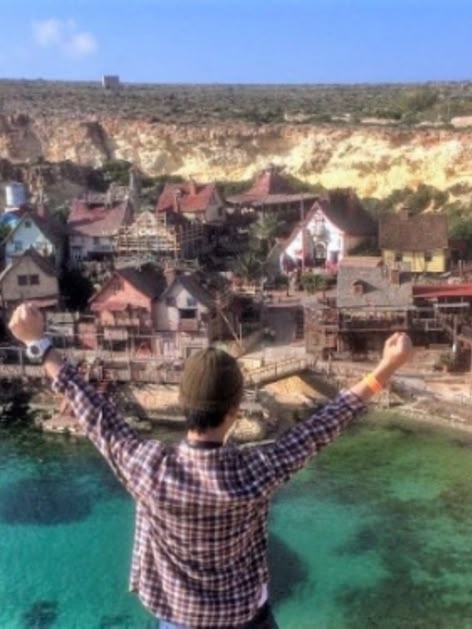10 castles to visit in Bavaria: Locations and Itineraries
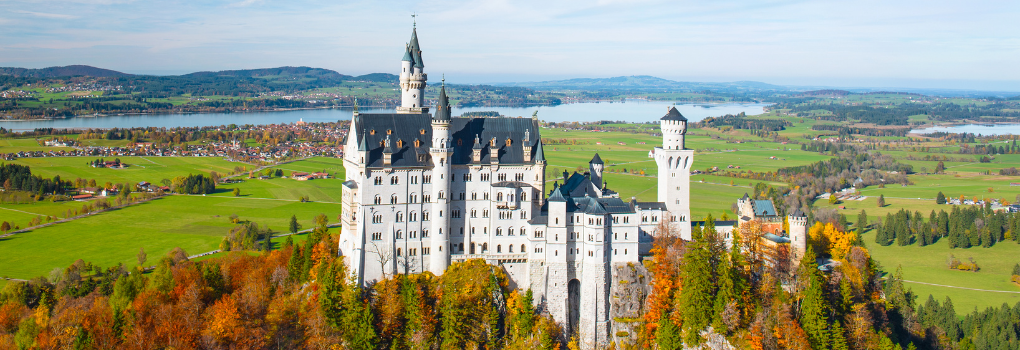
Why should one visit the castles in Munich?
There are several reasons to visit castles in Munich, the first is definitely their historical significance. Indeed, these buildings hold the past in an incredible way, including works of art, mysterious legends, and blast from the past furniture.
They also boast breathtaking architecture. Bavarian castles are often outstanding examples of historic architecture, ranging from Gothic to Baroque and Rococo. Exploring these buildings allows you to admire fascinating architectural details and gain insight into the lifestyle of the aristocratic classes of the past.
Many castles are then surrounded by breathtaking landscapes, or directly nestled in picturesque mountain or forest settings.
Visiting them is pure magic, especially if you happen to be at the time when they put on cultural events, concerts, art exhibitions and festivals.
Learn German on language trip
Improve your German on your language study trip to Frankfurt or Munich.
Bavarian Castles: Their history and legacy
Bavaria's landscape is dotted with magnificent castles that serve as a bridge between the past and the present, embodying the region's rich history and cultural heritage. These architectural marvels, often commissioned by the kings or noble families of the era, stand as the greatest testament to Bavaria's storied past. Their grandeur and majesty reflect the aspirations and achievements of those who ruled and lived in this evocative land.
Guardians of History and Inspiration for the Future
Nestled amidst lush landscapes and rugged terrains, Bavarian castles are enveloped in extraordinary myths and legends that have been passed down through generations. These tales, rich with heroes, battles, and romance, add a mystical allure to these stone sentinels. The castles do not merely guard the history within their walls; they also pave the way for future generations to connect with their heritage. By exploring these historic edifices, visitors gain invaluable insights into the architectural styles, societal structures, and cultural norms of times gone by.
A Source of Creative Inspiration
The beauty of Bavaria's castles transcends mere aesthetics, sparking the imaginations of countless individuals across the globe. Some of these castles boast such fairy-tale-like appearances that they have inspired the visions of creative geniuses, including Walt Disney. The iconic Neuschwanstein Castle, for instance, is said to have been the inspiration behind the Sleeping Beauty Castle in Disneyland. This direct influence of Bavarian architecture on pop culture illustrates the universal appeal and enduring fascination with these historical landmarks.
A Journey Through Time
As we delve deeper into the history and significance of Bavaria's castles throughout this article, we uncover the layers of stories embedded within their walls. Each castle has its own unique narrative, shaped by the historical events and personal tales of those who inhabited them. From the strategic fortifications built for defense to the opulent palaces designed for extravagance and display, Bavaria's castles are a testament to the region's diverse historical landscape.
In conclusion, Bavaria's castles are much more than mere structures; they are symbols of the region's rich history and cultural legacy. They continue to inspire awe and wonder in all who visit them, bridging the gap between the past and the present and inspiring future generations to explore and appreciate the beauty of history.
1. Nymphenburg Palace in Munich
The Nymphenburg Palace is one of the architectural and historical jewels of Munich, Germany.
Commissioned by Elector Prince Ferdinand Maria of Bavaria in 1664 to celebrate the birth of their heir, the future King Maximilian II Emanuel, the palace became one of the largest royal residences in Germany.
Its Baroque architecture, designed by Agostino Barelli, was later expanded and modified by other famous architects, including François de Cuvilliés. The palace is surrounded by beautiful landscaped gardens that include fountains, statues and pavilions.
Inside this magnificent Bavarian castle, visitors can admire a rich collection of artworks, historic furnishings and lavish decorations that testify to the pomp and pageantry of Bavarian royal courts.
Today, the Nymphenburg Palace is open to the public and offers visitors the chance to explore its luxurious interiors, stroll through its picturesque gardens, and discover the history of the Bavarian monarchy. It is one of Munich's main tourist attractions.
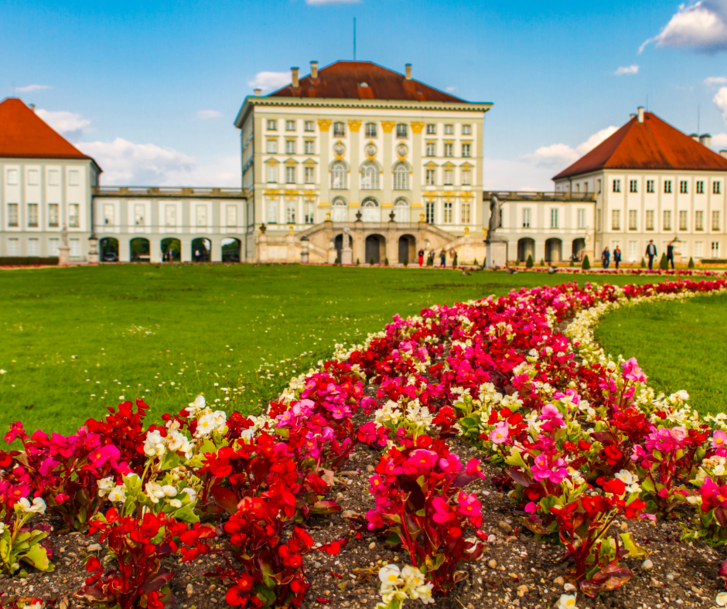
2. Linderhof Castle
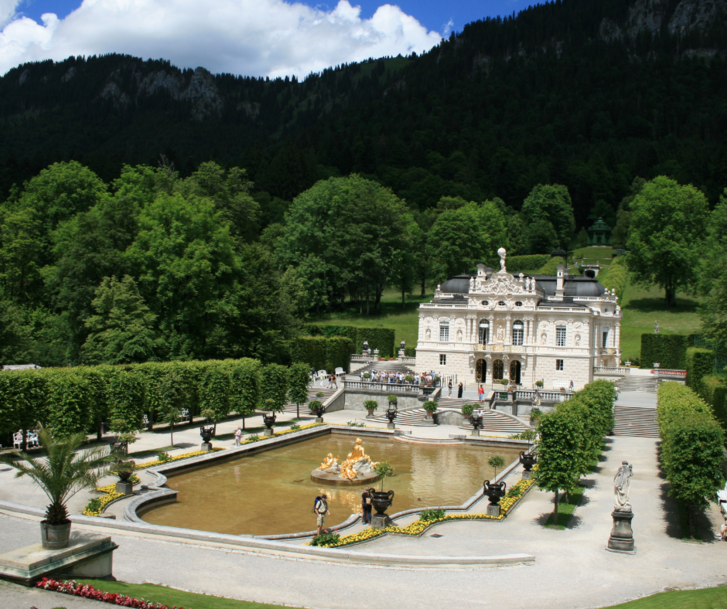
Among Bavaria's most famous castles, then, is Linderhof Castle, whose design is directly inspired by the palace at Versailles, France. With an eclectic Rococo style and influences from Renaissance and Baroque styles, inside the castle is luxuriously furnished with artwork, sumptuous furniture and elaborately worked decorations.
Although it is the smallest of the three famous royal castles built by King Ludwig II of Bavaria, it is actually for many the most impressive and beautiful.
It is located in southern Bavaria, near the village of Oberammergau, set in a beautiful French-style garden designed with fountains, statues and pavilions.
The main fountain, known as the Neptune Fountain, is particularly spectacular and offers a water and sound show every hour during the summer months.
Linderhof Castle is one of Bavaria's top tourist attractions and attracts visitors from all over the world to admire its beauty and immerse themselves in the history of King Ludwig II.
3. Burg-Harburg Castle
Changing genre altogether, Castle Harburg is one of the best-preserved medieval castles in southern Germany. It is located in the region of Swabia, northwest of Munich, near the Wörnitz River.
Built in the 12th century, Harburg Castle was initially used as a defensive fortress to protect the northern borders of Bavaria. Over the centuries, it has been expanded and modified several times, reflecting the dominant architectural styles of the current time.
The castle is known for its imposing main tower, which dominates the surrounding landscape, and its fortified walls. Inside, visitors can explore a number of historic rooms, including ornate halls, inner courtyards, and a chapel.
Today, Harburg Castle is open to the public and offers guided tours that allow visitors to discover its fascinating history and enjoy panoramic views of the surrounding countryside.
This castle in Bavaria is also used for special events, such as weddings and medieval festivals, which add to its unique charm and atmosphere.
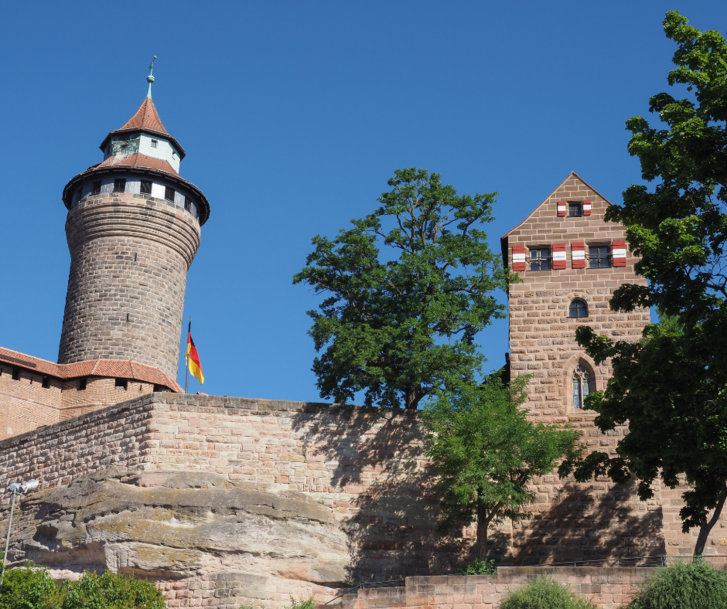
4. Weikersheim Castle
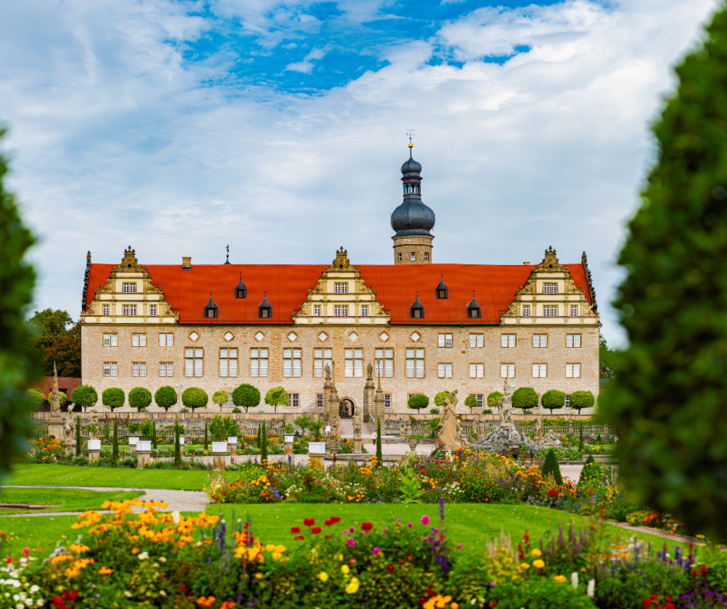
Renaissance in style and in the heart of the city for which it is named, Weikersheim Castle is another Bavarian wonder not to be missed.
Built in the 16th century, the castle is one of the most important examples of Renaissance architecture in the region.
It was built by the Hohenlohe family, a German noble family, and served as their main residence for several centuries. The structure combines Renaissance and Baroque architectural elements and is surrounded by beautiful landscaped gardens.
One of Weikersheim Castle's most impressive features is its banquet hall, with a finely decorated coffered ceiling and frescoed walls. Other rooms in the castle include the chapel, the horse hall and the lords' chambers.
The castle gardens are remarkable for their precise geometries, ornamental fountains and sculptures. Visitors can stroll through the gardens, admire the flower beds and enjoy the views of the castle.
In addition to being a venue for concerts, performances, and other cultural events throughout the year, this castle in Bavaria is open to the public and can be visited independently or by guided tours.
5. Wurzburg Castle
Würzburg Castle, most famous as the "Würzburg Residence," is one of the best known and most magnificent Baroque palaces in Germany. This building is also named directly after the city in which it is located, namely Würzburg.
Built in the 18th century, the castle was commissioned by the prince-bishops of Würzburg and designed by architect Balthasar Neumann. It is considered one of the masterpieces of Baroque and Rococo architecture in Europe, a true example of art and combination of architectural styles. We can, in fact, clearly recognize Italian, French and German influences in the magnificence of this castle in Bavaria.
Its lavishly decorated halls, reception rooms and formal gardens are an expression of the power and wealth of the prince-bishops who inhabited it.
One of the main attractions of the Residence is the Hall of Mirrors, a Rococo masterpiece with mirror-covered walls and elaborate decorations. Other notable rooms include the White Room, the Throne Room and the Hall of Frescoes.
In addition to the interiors, the Baroque gardens of the Würzburg Residence are equally impressive, with fountains, statues, and flower beds providing a pleasant backdrop for the castle.
Don't miss a visit to this wonderful castle in Bavaria, which was even declared a UNESCO World Heritage Site in 1981 and is a truly unmissable stop.
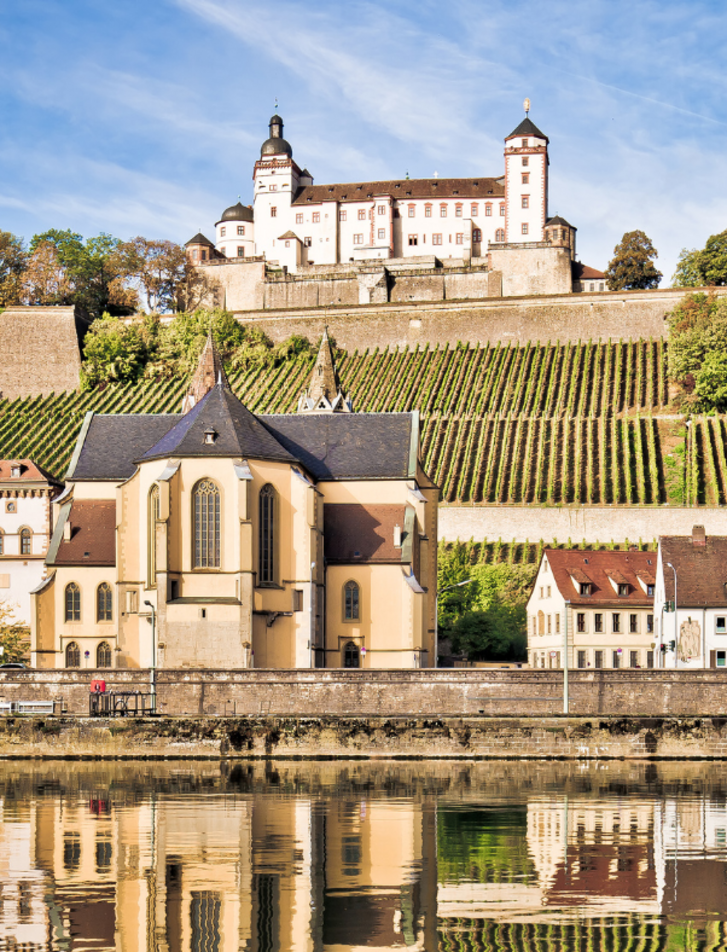
Want to Learn German? Experience German culture first hand and learn the language with Sprachcaffe in Frankfurt and Munich.
6. Neuburg Castle on the Danube
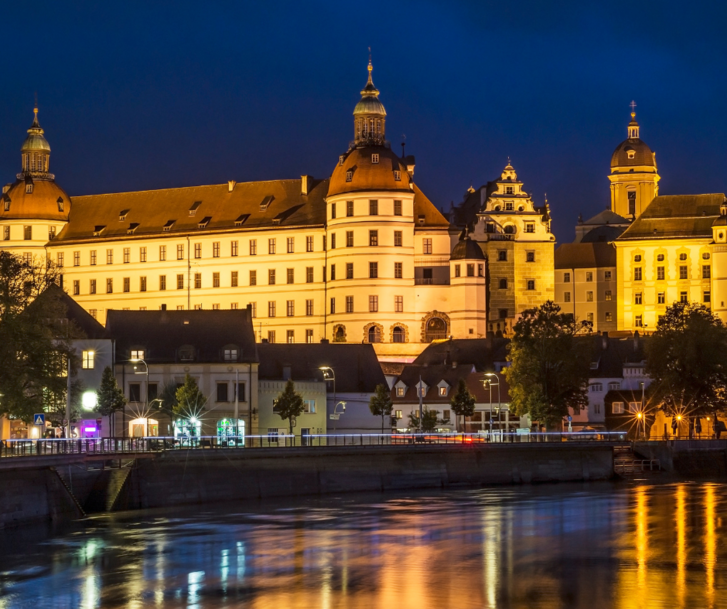
Another palace not to be missed is Neuburg Castle an der Donau, a majestic fortress located on the banks of the Danube River in the city of Neuburg an der Donau.
This castle dates back to the 12th century and has been an important political and cultural center over the centuries.
Formerly the residence of the Dukes of Palatinate-Neuburg, one of the most important noble families in Bavaria, the castle has been expanded and renovated on several occasions over the centuries, reflecting the dominant architectural styles of the time, such as Gothic and Renaissance.
Today, Neuburg an der Donau Castle is open to the public and houses several museums and exhibitions that illustrate the history and culture of the region. Highlights include the Knights' Hall, St. Stephen's Chapel, ornate halls, and the beautiful gardens surrounding the castle
The castle is also used for special events, such as weddings, concerts and cultural festivals, which add to its charm and vibrancy. Neuburg an der Donau Castle is thus not only an important historical site, but also a place of gathering and celebration for the local community and visitors.
7. Neuschwanstein Castle
Neuschwanstein Castle is one of the most famous and iconic castles in the world, located in southern Bavaria near the village of Hohenschwangau near the city of Füssen, Germany.
Commissioned by King Ludwig II of Bavaria in the 19th century, the castle is an extraordinary work of romantic and fantastic architecture. Ludwig II was fascinated by medieval culture and history and wanted to create a private retreat that was inspired by Germany's medieval castles-when all is said and done, we can say that he really succeeded.
The castle, designed by architect Eduard Riedel and later by Christian Jank, features towers, battlements, drawbridges, and sumptuously decorated interiors.
It is set in a spectacular mountain landscape and offers breathtaking views of the Bavarian countryside-this fairy-tale air has even been the inspiration for numerous film adaptations, including the iconic Disney castle from "Sleeping Beauty."
After Ludwig II's death in 1886, Neuschwanstein Castle was opened to the public and to this day continues to attract millions of visitors from around the world each year.
Neuschwanstein was opened to the public shortly after Ludwig II's death in 1886 and continues to attract millions of visitors from around the world each year. It undoubtedly represents one of the most popular tourist attractions in all of Germany.
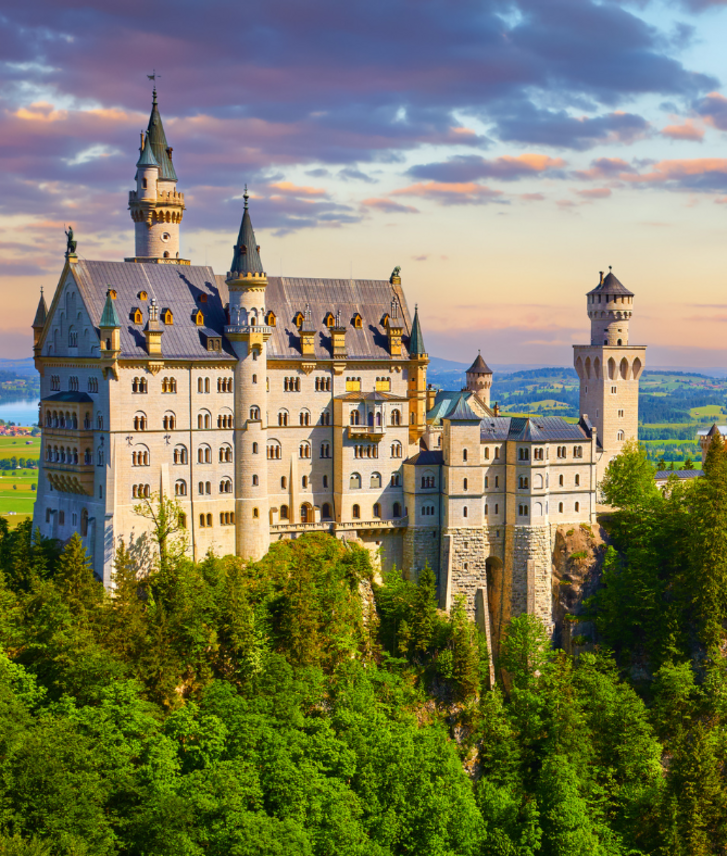
8. Mespelbrunn Castle
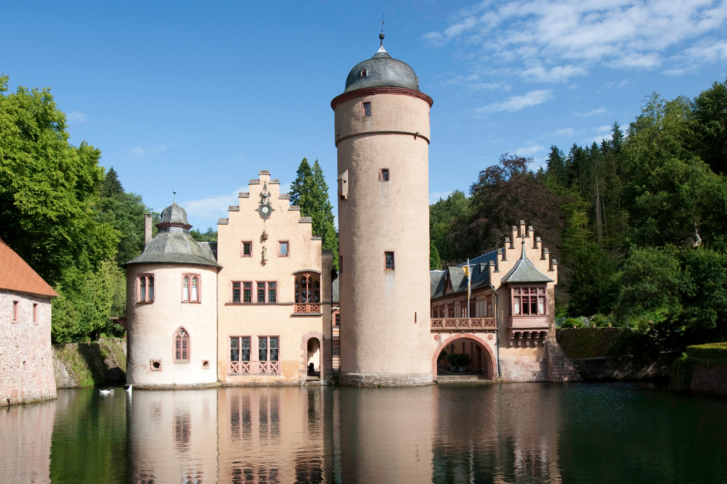
Mespelbrunn Castle is a charming castle located in the Lower Franconian region, and dates back to the 14th century. Known in particular for its well-preserved medieval architecture and picturesque location in the middle of the Spessart Forest, it was originally built as a defensive fortress around 1412 by the Echter family.
Remaining in their hands for more than 600 years, it is now open to the public for guided tours that allow those who wish to explore its historic rooms, courtyards and towers. Throughout the year, the Bavarian castle also hosts special events such as medieval festivals and themed theater performances that bring the atmosphere of the past to life. After all, it is the perfect setting for such events.
What makes Mespelbrunn Castle so unique is its isolated location in the heart of the forest, surrounded by centuries-old trees. This has helped preserve its romantic and fairy-tale character over the centuries.
9. King's House on Schachen
Famously known by the name Schloss Schachen, Schachen Castle is located on the mountain of the same name in the heart of the Bavarian Alps.
Commissioned by King Ludwig II of Bavaria, the same ruler who built the famous Neuschwanstein Castle, Schachen Castle was designed as a summer mountain retreat. It was built between 1869 and 1872, with the intention of being a place where Ludwig II could retreat from court life and immerse himself in the unspoiled nature of the Alps.
The design of the castle is influenced by traditional Alpine architecture and features elements of neo-Romanesque style.
Those who love mountains, nature and unspoiled air will also fall in love at first sight with this Bavarian castle and the atmosphere it can provide. Here you will have the opportunity to disconnect all thoughts and immerse yourself in what was the lavish life of Bavarian royalty in the 19th century. Between ornate rooms, royal salons, and landscaped gardens, you'll live their own lives for a while, from high in the Bavarian Alps.
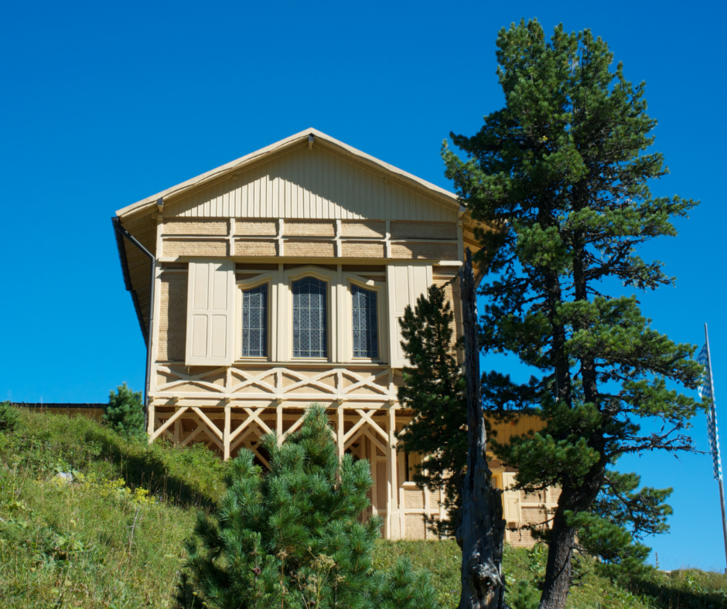
10. Hohenschwangau Castle
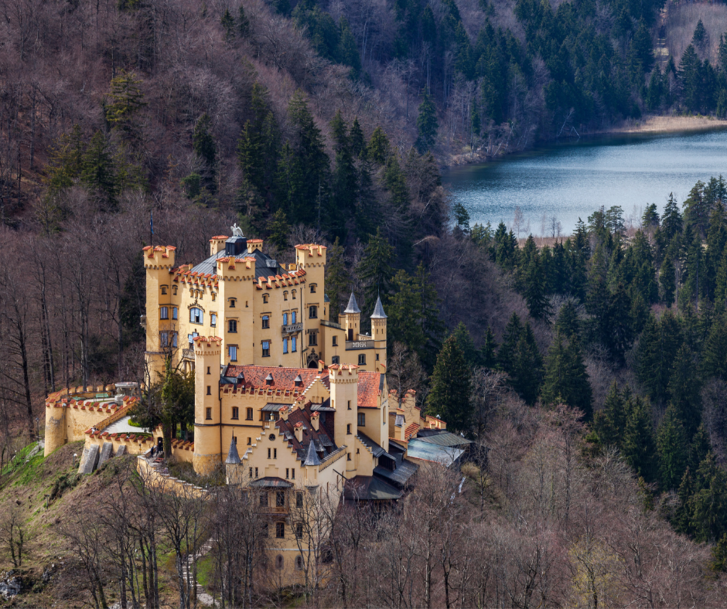
Finally, let's talk about Hohenschwangau Castle, which is located in the vicinity of the more famous Neuschwanstein Castle. Built in the 19th century, the castle has a rich and interesting history and is a major tourist attraction in the region.
It was originally built in the 12th century as the residence of the Wittelsbach royal family; however, in the 19th century, King Maximilian II of Bavaria decided to restore the castle, giving it a more romantic and picturesque appearance. It was in this form that the castle became known to the world.
A distinctive feature of Hohenschwangau Castle is its scenic location, situated on a hill overlooking the Alpsee Lake and the surrounding mountains. Its towers and colorful facades make it a fascinating place to explore and photograph.
Among the reasons it is famous is that it was the childhood home of King Ludwig II of Bavaria: here you can understand much more about this figure who was as enigmatic as he was eclectic.
Locations of castles in Bavaria:
Now that you have discovered the beauty of the castles in Bavaria, Now lets learn how to go to these castles. But it may not be so straightforward, since Bavaria is a rather large region anyway and you may not have enough time.
Therefore, we suggest that you first arm yourself with a map of castles in Bavaria, so that you realize the distances, and select the castles that are closest to each other so that you can organize your visits in an informed and sensible way.
For example, here are pairs of castles that are located near each other:
1. Neuschwanstein Castle and Hohenschwangau Castle: we are in the Schwangau region;
2. Linderhof Castle and Oberammergau Castle: both located in the Oberammergau area, these castles are within walking distance of each other;
3. Hohenschwangau Castle and Wieskirche Castle: These two sites are quite close and can be visited together for a cultural and spiritual day out. After exploring Hohenschwangau Castle, you can head to the nearby Wies Church, a masterpiece of Baroque architecture and a UNESCO World Heritage site;
4. Nymphenburg Castle and Schleissheim Palace: Both located on the outskirts of Munich, these complexes are rich in history and art.
Plan your trip by optimizing time and visits and fully immerse yourself in the fairy-tale, timeless setting of Bavaria. And if you fall too much in love with this land and don't want to leave, choose to experience a Sprachcaffe study year in Munich!






